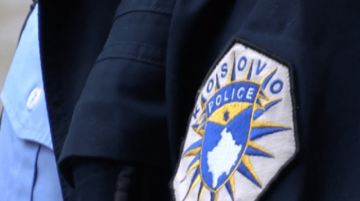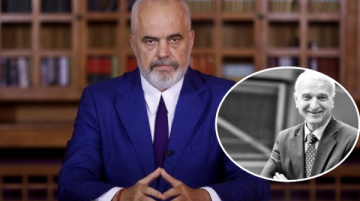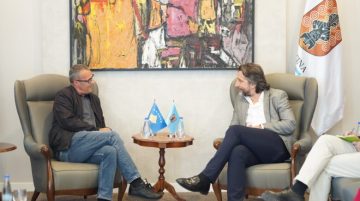On Cuban Women On Jstor
The Cuban government didn’t charge tuition to students and Afro-Cuban women and Cuban women have been in a position to research in medical faculties. They gained the chance to be high-paying doctors and this can be a main achieve in women’s rights in Cuba. By receiving regular cash and materials commodities corresponding to clothes, the Afro-Cuban doctors were able to support their households in Cuba. In addition, they’d not have an obligation to immigrate to a new nation.
They’ve had entry to the Internet, which has provided new avenues of opportunity. Some have taken online courses and watched YouTube tutorials to brush up on method and concept, or crowdfunded their albums.
During this period, much of the women rebels’ work involved making progress in the “war of ideas” theater through enacting the roles of nurturers and mourners. Specifically, Bayard de Volo argues that, “women had been cumulatively crucial in the nurturing of a insurgent collective identification and oppositional consciousness among anti-Batista activists” (p. 68), owing largely to social constructions of and ideals surrounding gender and femininity. In the second chapter, Bayard de Volo delves into women’s historic (pre-1950) political participation and mobilization in Cuba, thereby contradicting the Cuban War Story myth that the revolution sprang forth in 1958 from the efforts of Castro and his comrades. The writer thus demonstrates that the growing help for a social revolution started well earlier than and girls were politically lively and arranged well earlier than Batista’s regime got here to energy. In maintaining with the concept that the insurrection was both an ideological and a navy one, the author speaks to both the symbolic significance of women’s previous mobilization and their tactical contributions to rebel efforts.
Trivia About Cuban Women Confr ..
Espín regularly represented Cuba at the United Nations General Assembly. She formally grew to become first lady in 2006 after an ailing Fidel ceded power to Raúl, who assumed the title of appearing president. The battle of Yorktown was about to start, and the British General Charles Cornwallis, believed he would defeat the Americans. According to Washington’s aide, Count de Rochambeau, “the Continental troops almost with out clothes. Washington is not going to have at his disposal half the variety of troops he counts on having.” The story is informed by historian Stephen Bonsal within the e-book When the French Were Here, published in 1945.
At the center of Voices of Resistance are the testimonies of 13 women who fought for human rights and social justice of their communities. Some played significant roles within the Cuban Revolution of 1959, whereas others organized grassroots resistance to the seventeen-year Pinochet dictatorship in Chile. Though the women share many aims, they’re a various group, ranging in age from thirty to eighty and coming from diversified ethnic and socioeconomic backgrounds. The Cuban and Chilean women Judy Maloof interviewed use the narrative type to reinvent themselves. Maloof includes narratives from a poet, a tobacco employee, a political prisoner, an artist, and a social employee to reveal the different faces of their wrestle.
This information is shared with social media, sponsorship, analytics, and different vendors or service providers. Dedicated to offering persevering with educational opportunities for Miami-Dade County’s Hispanic females, the Cuban Women’s Club established this scholarship endowment in 1993. The Club’s support has enabled women of Cuban respectable to additional their profession goals by serving to them obtain undergraduate and graduate degrees. Lauren Du Graf’s writing on movie, art, music, and literature has appeared within the New York Times, the Los Angeles Review of Books, Playboy, and Oxford American. Last May, García released a music video, directed by Yeandro Tamayo, that options same-sex couples kissing; it was among the many first Cuban-made portrayals of homosexual love to appear on a state-run channel in Cuba. The video gained three Lucas awards—Cuba’s highest honor for music movies.
The Girl In The House, The Person On The Street: Young Womens Financial Empowerment And Social Norms In Cuba
As of 2011, women in Cuba made up more than 80% of college college students and around 68% of college graduates. Comparatively, women made up about 57% of undergraduates within the United States in 2008.
Still, the group “Instinto” created a reputation for itself within the early days of the style and what locals proceed to check with as a movement. HAVANA – The hip-hop movement in Cuba has always maintained a voice of its own. Starting within the underground Havana scene in the course of the 1990’s, the beginnings of hip-hop have been met with skepticism because of its American Bronx-bred roots. Still, it turned a medium of expression for a era cool training that was enduring the “Special Period,” a decade of financial crisis in the country. By sampling U.S. well-liked hip-hop songs before discovering an area fashion, Cubans created a motion that continues to thrive. It seems to be accepted in Cuba that boxing is a man’s sport, far too harmful to accommodate women. Elsewhere, gender equality in sport has developed and boxing joined the ranks of women’s Olympic events at London 2012.
The first part of the program was a panel presentation with lecturers Professor Perla Rozencvaig of Columbia University, creator Odette Alonso of Universidad Autónoma de México and Professor Elena Martínez of Baruch College who shared their insights on the works of these five women writers. The panel was moderated by Professor Ana María Hernández of CUNY LaGuardia Community College. It was a full turnout in lecture room VC with both school and students helping to honor these 5 pioneering women.
The Revolution Modified Our Lives
The 5 founding women might be honored on Feb. 25 at a special event at the Roberto C. Goizueta Pavilion on the Otto G. Richter Library. Gladys Gómez-Rossié remembers sitting after lunch within the break room of the University of Miami Libraries within the late Sixties listening to a transistor radio because the Spanish-language station read the names of the Cubans who had arrived on the Freedom Flights that day. The concept that even a large majority of girls in North America are ‘rich daddy’s little girls’, (in different phrases, they’re from wealthly backgrounds), is just laughable. Of course, , they could differ from South American women in that they aren’t as keen to therapeutic massage male egos. You say that ‘Spanish women are more snobbish’, but I’ve never encountered snobbishness in Spain.
For part 2 of our Singles Guide to Cuba, we focus on relationships between Investigating Russian Women Dating Foreign Men in Ukraine Nowitzki Dating! As a fellow revolutionary from the second wave feminist motion of the sixties and seventies, I am thinking in response to the question posed by your second post, that it’s potential to have strong boundaries and self-respect and also frolic with unabashed enthusiasm within the sexual realm. “What’s revolutionary at one time can become orthodox tomorrow.” He believes this is what happened with the Cuban revolution—the idealistic cause became frozen into a defensive and inflexible paperwork. Criticism of the FMC surfaced in the 1990 llamamiento of the Revolution. The main complaint involved the excessive amount of time spent in conferences, work, and voluntary activities, which was made worse by the generalized problems in acquiring meals and managing transportation. Also, scarcity of products has compelled many younger women into prostitution, which the federal government has tacitly supported. The FMC’s effort to transform women into productive and moral revolutionaries is being undermined by a declining financial system.
Furthermore, on both the navy and ideological fronts, analyzing the function of women’s involvement reveals the extent to which social constructions of gender feature in the course and supreme outcomes of such conflicts. Through the years of insurrection, women have been concerned with the insurrection in a variety of capacities, on both the army and ideological battlefields of the Cuban Revolution. Ultimately, however, Bayard de Volo argues that the guerrilla management “pursued armed revolt in a method that both built-in women and even exaggerated their contributions while leaving the gender binary and thus power differentials intact” (p. 236). In 1993 a gaggle of Cuban women received collectively, joined forces as a gaggle and began to take unique and unheard-of initiatives. They created the Association of Women Communications Workers and referred to as it Magín, a word in old Castilian meaning intelligence and inspiration, expertise and imagination. For three years Magín was an distinctive experience, one that made the profile of women, the various changes that the revolution accomplished in women and the still-pending adjustments, evident to the women who participated in it–and to the circle of people it reached.
During and because the revolution, fighting women such as Celia Sanchez and Haydee Santamana have been all but canonized, and Cuba’s main actresses have positively portrayed guerrilla fighters in films corresponding to Manuela. To the present, women have continued to serve in the police and the navy both at home and in revolutionary efforts overseas, especially in Central America and Africa.
They also have many opportunities and rights to proceed their formal schooling, increase their cultural horizons and partake in regular exercise applications for the benefit of each physique and thoughts. The Federation has additionally been credited with reviving sociological research in Cuba; it has supported new research on women’s status, and has additionally worked to incorporate extra women researchers into social analysis packages. In 1991, a gaggle of Cuban lecturers and the Federation of Cuban Women worked collectively to create the Women’s Studies Program on the University of Havana, and also launched women and family programs in several other Cuban universities and a Center for Research on Women throughout the FMC. The Federation also created Orientation Houses for Women and Families at municipal levels, which help susceptible women and attend to issues similar to adolescent pregnancy, alcoholism and violence, and childcare centers for kids of working women. Mariela Castro Espín is a renowned LGBTQ activist on the island and directs the Cuban National Center for Sex Education .














